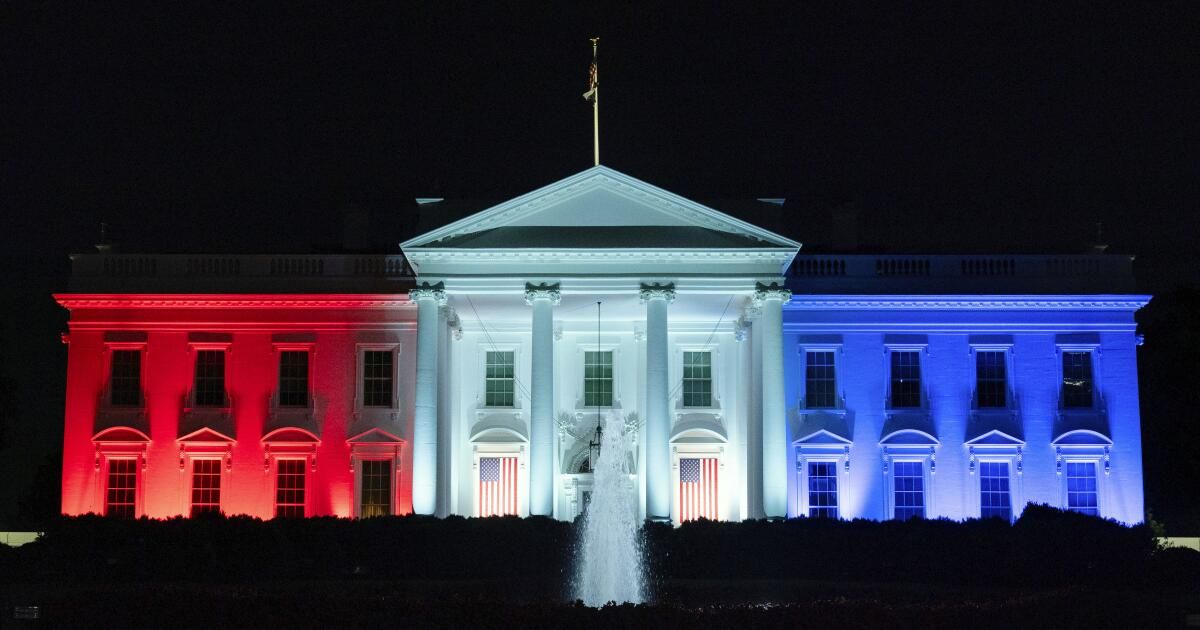Political analyst Samuel Lubell introduced the concept of the sun and moon parties in 1951. The sun party is the majority party, and “it is within the majority party that the issues of a given period are debated; while the minority party shines with the reflected radiance of the heat thus generated.”
Franklin D. Roosevelt's Democratic Party was the party of the sun for two generations, until the dawn of the Reagan majority. When Bill Clinton signed welfare reform and declared (falsely), “The era of big government is over,” he was reflecting the reality of that transformation.
In the early 2000s, the Republican Party returned to its moonlight status. “But,” as David Brooks says observed in 2011“something strange happened. No party took the initiative. …Both parties have simultaneously become minority parties. “We live in the era of two moons and no sun.”
That dynamic only intensified when politicians and voters accepted the new abnormal as normal. If you look too closely at specific elections, it can be difficult to see, but the trend becomes clear in retrospect.
George W. Bush ran in 2000 as the candidate of the party of the sun and obtained the smallest of victories. As it happens, the use of “red” and “blue” to denote Republicans, Democrats, and the political complexion of states also became a fixture of our politics that year. It may seem trivial, but I think red versus blue rhetoric accelerated polarization by solidifying the idea that partisanship is a type of identity.
Bush won re-election in 2004 on the back of the two-moon system, boosting turnout among his political base by emphasizing culture war issues, including gay marriage and the push to support a wartime president.
The election of Barack Obama in 2008 overshadowed all of this due to the unique nature of his candidacy and Bush's unpopularity in the midst of a financial crisis and war fatigue. But it's worth remembering that, as a candidate, Obama never pivoted toward the center. He won re-election in 2012 with a brilliant electoral participation strategy, which motivated millions of low-propensity people to vote. young and minority voters.
In 2016, the Republican Party led by Donald Trump adopted the same strategy in reverse, generating millions of low-propensity people. white voters without a college education.
One result of this dynamic is that parties care less and less about offending or angering those they consider irrelevant “enemy” voters. In fact, outraging the opposition becomes a strategic objective because in an era of polarization, the enemy's outrage reinforces partisan commitment on your own side. This requires increasingly apocalyptic rhetoric about the consequences of defeat.
More importantly, what happens in campaigns doesn't stop there. Electoral strategies become government philosophies. Parties that run on the theory that they just need more bases to win are left beholden to their main supporters in power.
At least rhetorically and stylistically, the Trump administration was defined by its constant pandering to its biggest supporters. Infuriating his opponents was the essence of his presidency.
In 2020, Joe Biden ran as the party of the sun candidate. He had his followers locked down because of their intense hatred of Trump. But his margin of victory came from voters who were nostalgic for normalcy.
Unfortunately, once elected, Biden took for granted the middle ground he craved for normality and outsourced policy to his base, believing he could be a transformative president rather than the interim president he had implicitly promised to be. As moderate Democratic Rep. Abigail Spanberger of Virginia said exasperatedly. put it“No one chose him to be FDR; “They chose him to be normal and stop the chaos.”
Remove the telescope and you can watch two moons wreak havoc on the political tides. Each party comes to power in a simultaneous state of overconfidence in its political mandate and panic that its hold on power will be short-lived. So they go all out to placate the base and enrage the opposition, making their fear of losing the next election a self-fulfilling prophecy. That's why the White House and Congress keep changing hands.
One of the reasons it is so difficult to hinder this unprecedentedly tied race is that Kamala Harris and Donald Trump are seeking votes in different universes. Harris is repeating Biden's strategy of trying to capture disaffected voters in the middle. Her problem is that until five minutes ago, she was widely considered aligned with the hardcore Democratic base; Biden at least it seemed as a moderate democrat.
Trump, meanwhile, I couldn't care less about voters who don't like him and his antics. He's targeting people who just want more cowbell.
Regardless of who wins, it's clear we won't see the sun for a while.












